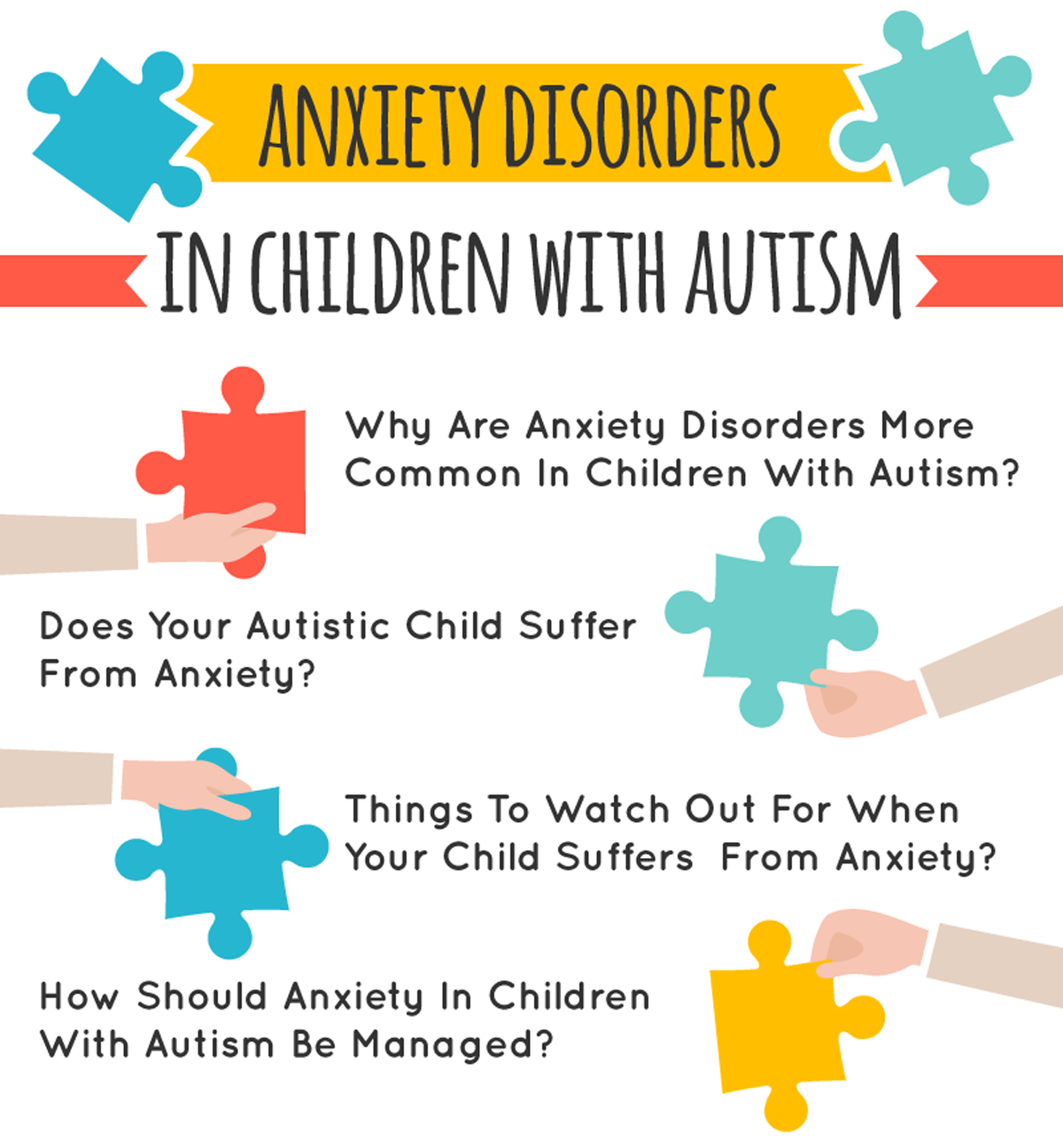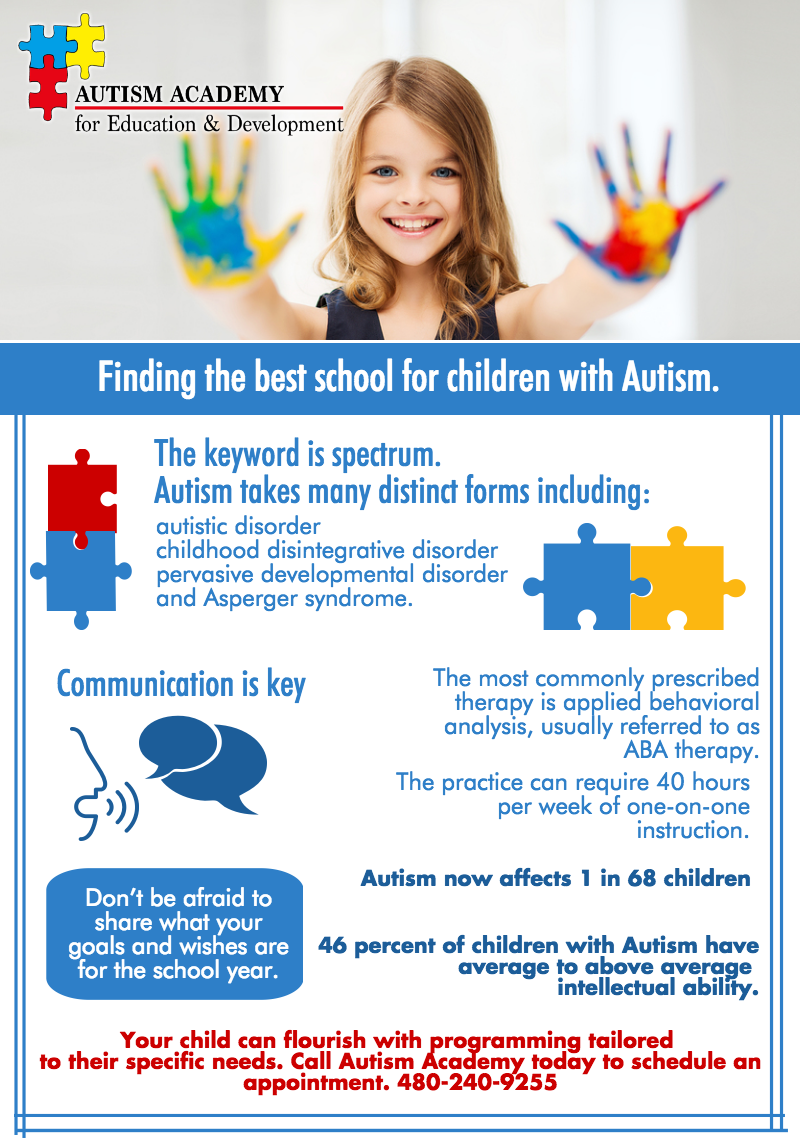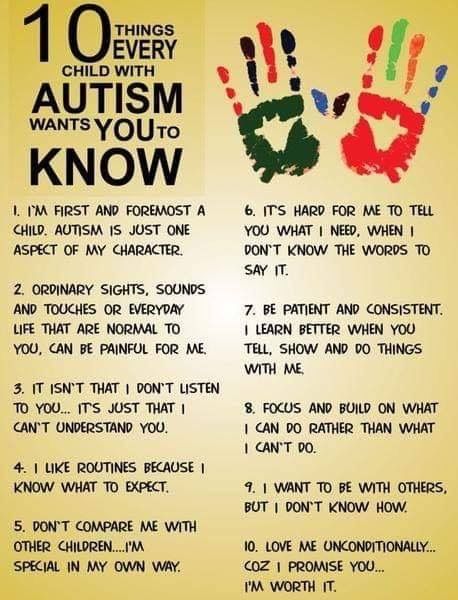Tip : Create A Personalized Autism Treatment Plan
With so many different treatments available, it can be tough to figure out which approach is right for your child. Making things more complicated, you may hear different or even conflicting recommendations from parents, teachers, and doctors.
When putting together a treatment plan for your child, keep in mind that there is no single treatment that works for everyone. Each person on the autism spectrum is unique, with different strengths and weaknesses.
Your childs treatment should be tailored according to their individual needs. You know your child best, so its up to you to make sure those needs are being met. You can do that by asking yourself the following questions:
What are my childs strengths and their weaknesses?
What behaviors are causing the most problems? What important skills is my child lacking?
How does my child learn best through seeing, listening, or doing?
What does my child enjoy and how can those activities be used in treatment and to bolster learning?
Finally, keep in mind that no matter what treatment plan is chosen, your involvement is vital to success. You can help your child get the most out of treatment by working hand-in-hand with the treatment team and following through with the therapy at home.
Expert Q & A: Support For Students With Asd
Parenting is challenging for anyone, but for families with autistic children, there are additional daily considerations. We asked our experts to provide some information for parents in dealing with these challenges.
Jessica Leichtweisz, founder and CEO of Hope Education Services, who is also a speaker and author in the field of autism
family coach and motivational speaker, who has worked in K-12 public education for 18 years
What are IEP goals and how are these goals created for students with autism spectrum disorder?
Lisbon: IEP goals are based on the identified area of weakness for a child. These goals should be specific, measurable, attainable, results oriented and time bound . For children on the spectrum, these goals should be based on their individual needs. For example, if a child with ASD does well academically based on information from parent and educators but struggles with emotional regulation, IEP goals may only address social and emotional concerns to assist the child in identifying his or her triggers and understanding how to emotionally regulate in a positive manner when triggered.
IEP goals should always be child-centered. It is important that teachers and parents agree that each goal should be based on current and relevant data that address the childs strengths and needs and affords the child opportunity to make adequate progress towards these goals on a yearly basis.
What services are available to support parents of ASD children?
Dont Use Creative Language
Autistic children take things literally. If you sprinkle your conversation with irony, sarcasm, exaggerations, or idioms, youre bound to confuse the child.
For example, dont tell a child to keep an eye on something. The child may reach for it and put the item near his face.
Be as literal and direct as you can, so the child knows exactly what youre talking about.
If you slip and say something unusual, dont laugh at the child for taking your words literally. Apologize for your mistake, and rephrase the sentence so your meaning is clear.
Don’t Miss: Level 2 Asd
Sensory Activities For Children With Autism
Because children with autism are often hyper aware of sensory input, its helpful for educators to provide accommodations so their students can focus in class. These activities involving sensory stimulation can keep kids with autism grounded in the present and comfortable learning with the rest of their classmates.
Dont Assume Nonverbal Children Cant Communicate

Many children with autism dont speak at all. But never assume that they dont have something to say.
For children with autism, behavior is a form of communication. That includes:
- Blinking
- Hitting
- Walking away
Listen to what the child is trying to say. Ignore it, and the behavior may escalate until the child gets the point across.
Recommended Reading: Mild Adult Autism
Listen To The Parents
Just as you surround a child with autism with acceptance, do the same for parents. Your support could mean the world to them.
Advocates explain that parents would love a night off to decompress and get away. If you feel comfortable with the idea, offer to babysit. If you dont, provide a listening ear to a parent in need. Schedule a regular coffee date for decompression and chatter, or set up play dates between your children while you both supervise.
This Is A Great Time To Parent A Child With Autism
“I am grateful that we live in the times that we do. So much new information has been discovered about autism. We live in the age of the internet and I can connect with another autism mom who lives several states or even countries over and talk about our shared experiences. I am grateful to have things like iPads that not only help my son communicate but also gives us a chance to share a moment while watching one of his favorite YouTube clips. A tip of my cap to the families that went before us. They really helped pave the way for the benefits my son has now. I hope I can do the same for the ones coming behind us.”
Eileen Shaklee, Wall, New Jersey
You May Like: Stage 4 Autism
Calming Strategies For Autism Meltdowns
Now, before I jump into these strategies, I have a word of warning.
Please dont do all of these immediately when your child starts a meltdown.
You need to know what works for your child, and what their sensory preferences are.
Not every strategy will work for every child, so test them out one at a time to see what works best for your child.
What To Do When My Child Is Having A Tantrum
1. Tantrum vs. Meltdown
Before you intervene in any way, try to figure out whether your child is having an autism meltdown or tantrum. As we discussed earlier, they may look similar but they need different approaches.
Meltdowns are a response to external stimulation, while tantrums can occur when a need is not being met.
It is important to distinguish the two before having a strategy to manage the situation.
2. Figure out the motivation
Understanding what lies behind the tantrum behavior will give you the key to manage it.
You will be able to respond to it more appropriately. They may want something, like a toy or attention. Recognize this want without giving it to them.
3. Remove the audience
Sometimes removing the audience from the environment, the tantrum will stop. If you noticed this pattern, like your child tends to have tantrums in crowded areas, teach them coping mechanisms in small gatherings.
Try removing yourself from the environment . It could also help reduce and stop tantrum.
4. Praise and reinforce positive behavior
Acknowledge the feelings of your child and praise them for their good behavior.
You can give them a hug, or tell them how they managed to do the thing well. These will avoid tantrum outbursts as your child will learn that they have your attention and can be successful in doing things.
5. Build the necessary skills
We have discussed before that tantrums can be caused by lack of certain skills like problem solving or negotiating.
- impulse control,
Read Also: What Color Is The Autism Ribbon
Theres No Need To Tag Us In Every Facebook Article About Autism
Parents of children on the Autism Spectrum are research junkies, and do their best to stay up-to-date with each and every advancement in the autism community. Certainly, they know more than the average person. As one parent put it, Theres literally no Facebook article we havent seen. So, before you share it and tag us because were that friend with the child with autism, take that into account.
Read Also: What Is The Life Expectancy Of People With Autism
How To Discipline A Child On The Autism Spectrum
The purpose of discipline is to set healthy boundaries and clear expectations of appropriate behavior, not to punish or embarrass your child.
While there are certainly challenges to disciplining a child on the autism spectrum, discipline instills valuable lessons that the child will take with them their whole lives. Keep reading to learn safe, effective, and compassionate strategies for how to discipline a child on the autism spectrum.
Read Also: Do Autistic Toddlers Dance
Forget Your Own Social Assumptions
For most of us, certain behavior is second nature. Like greeting people when they walk into a room. Making eye contact when we speak. Noticing when a conversation is over.
But for people with high-functioning autism these behaviors are not automatic.
Acknowledging that fact and being patient as your child learns this behavior is a crucial step in moving forward with a relationship rooted in understanding.Taking the extra steps to acknowledge these differences and wrapping them into your own behavior towards your child can be very helpful.
Sorting With Snacks Activity

This tactile activity for children with autism can be a fun way to engage students during math time. Give everyone in your class a food that is easy to sort, like chewy snacks or small crackers. Multicolored snacks are ideal, but you can also use food that comes in different shapes, textures, or sizes.
First, ask them to sort the food by color, shape, or another characteristic. Then, use the snacks to teach students basic math skills like counting, adding, or subtraction. Once theyve grasped the concept you want to teach, reward your students by letting them eat the snack.
Read Also: Is Freddie Highmore A Genius
Your Child With Autism May Bring Out The Best In Your Family
“Our son is the oldest of our three children, and he has taught us all the importance of kindness, patience, compassion, listening and respect. These attributes allow our family to keep a very grounded and real perspective on what is truly important in life vs. what is fleeting, frivolous or simply not worthy of our energy.”
Stephanie Martin, Greenville, South Carolina
“It’s exciting and challenging because each day holds a new adventure. Despite the challenges of having a child on the spectrum, my life is perfectly complete. My son challenges me to be a better parent every single day.”
Yolanda Holmes, Greenville, South Carolina
Tips For Working With Individuals On The Autism Spectrum
Thank you to the Indiana Resource Center Autism and Autism Society of Indiana for compiling these tips.
Remember that each person is different, and specific tips may not apply to all.
For more information on the Indiana Resource Center for Autism, visit our website at . Also, be sure to like IRCA on Facebook, and join us on Twitter and Pinterest.
For more information on the Autism Society of Indiana, visit their website at . Also, be sure to like ASI on Facebook, and join them on Twitter.
Indiana Resource Center for Autism & Autism Society of Indiana. Autism awareness month: Tips for working with individuals on the autism spectrum. The Reporter, 21. Retrieved from .
Recommended Reading: Autism Spectrum Disorder Symbol
Ways To Help Your Child With Autism Fit In Socially
Most children with autism have a tough time fitting in with their peers. In fact, because autism’s core symptoms include difficulty with social communication, social problems are almost inevitable. But while your child with autism may not ever become the homecoming king or queen , there are some concrete steps you can take as a parent to help your child make sense of the expectations of people around them.
Education And School Planning
At school, a plan can be made to support and structure your childs learning. A committee identifies the needs of exceptional students. When they have identified these needs, they create a plan with help from the student and their parents or guardian. This is called an individual education plan .
Support at school should include behavioural, social and academic approaches. A team of professionals usually puts the plan together based on the child’s strengths and weaknesses. It may include solutions such as:
- various therapies
- opportunities to interact with peers
Also Check: Autism Gaze
Characteristics Of Autism Can Include:
- trouble using and understanding language or certain aspects of language such as sarcasm, expressions, and body language.
- difficulty taking in sensory input in an ordinary way. For example, a vacuum cleaner may sound overly loud, a smell may be extra strong, or the feel of something may be extra itchy.
- a need for a particular routine so they know what to expect as they can become frustrated when things dont go the way they had expected.
- trouble recognizing another persons opinion or understanding another persons feelings.
- difficulty working on or participating in activities with no clear ending
- difficulty switching from one activity to another, especially if they have to switch from something enjoyable to something not enjoyable .
- difficulty organizing themselves in productive play when not directed or given specific instructions.
Sometimes these characteristics lead to problem behaviors at home, in the classroom, or in the community which can be frustrating for the child and the adults caring for him.
Here are some strategies which can prevent problematic behaviors or promote positive behavioral changes :
How Functional Communication Training Works
Stephanie Lee, PsyD, a clinical psychologist at the Child Mind Institute, explains how a clinician implementing FCT works. She begins, Dr. Lee says, by identifying something the child is highly motivated to achieve say, a favorite food, toy or activity. That will serve as the natural reward for using a sign or picture that represents that thing.
So if a child really, really likes his Ninja Turtles or Thomas the Tank engine, or a childs favorite, favorite thing to eat is Cheetos, she says, we would take that item and then teach the child either a sign or a picture that represents that item.
Initially, the child is set up for what Dr. Lee calls errorless learning, in which the therapist guides the child to use the sign or picture and obtain the reward. This supported communication is repeated, each time resulting in the earned reward, until the child is able to succeed with less and less prompting from the therapist.
As we fade that prompting, the child becomes more and more independent in their communication, says Dr. Lee.
Once the child has learned this system of communication that the sign or the picture that theyre using needs to be received by someone else, in order for them to get their item then slowly but surely we can teach a new sign or introduce a new picture,explains Dr. Lee.
Read Also: Is Level 1 Autism High Functioning
Parenting A Child With Autism
Discovering that your child has autism can change your life tremendously. Notwithstanding your deep love for your child, parents can experience feelings of grief, anger, fear, and stress. Parents may worry that their vision for the childs future has disappeared, that their relationship with their spouse will be strained, that the family will face mounting financial pressures. Its natural to feel overwhelmed.
But know that autism is a common conditionaround 1 of every 54 children has a diagnosisand treatments have helped many children with autism go on to live full, meaningful lives. There are advocacy organizations, support groups, mental health professionals, and loved ones who are ready to support you and your child to the fullest.
On This Page
Behavior And Communication Approaches

According to reports by the American Academy of Pediatrics and the National Research Council, behavior and communication approaches that help children with ASD are those that provide structure, direction, and organization for the child in addition to family participation .
Applied Behavior Analysis A notable treatment approach for people with ASD is called applied behavior analysis . ABA has become widely accepted among healthcare professionals and used in many schools and treatment clinics. ABA encourages positive behaviors and discourages negative behaviors to improve a variety of skills. The childs progress is tracked and measured.
There are different types of ABA. Here are some examples:
- Discrete Trial Training DTT is a style of teaching that uses a series of trials to teach each step of a desired behavior or response. Lessons are broken down into their simplest parts, and positive reinforcement is used to reward correct answers and behaviors. Incorrect answers are ignored.
- Early Intensive Behavioral Intervention This is a type of ABA for very young children with ASD, usually younger than 5 and often younger than 3. EIBI uses a highly structured teaching approach to build positive behaviors and reduce unwanted behaviors . EIBI takes place in a one-on-one adult-to-child environment under the supervision of a trained professional.
- Early Start Denver Model
There are other therapies that can be part of a complete treatment program for a child with ASD:
Read Also: Autistic Person Lifespan
Does Insurance Cover Autism Services
Services for children with autism are very oftenbut not universallycovered by insurance. All 50 states now require private health insurance policies to provide some degree of coverage for autism treatment. Most Medicaid plans cover Applied Behavioral Analysis when deemed medically necessary. Yet insurance companies may not reimburse the full cost or the length of time a child really needs.
Children with autism are eligible for educational services through their public school system. They may develop an individualized education plan or a 504 plan, both of which aim to help kids fully participate in their education.
Joining a local support group can be extremely helpful for parents of children with autism. In addition to emotional support, members have expertise in navigating available services in their state.